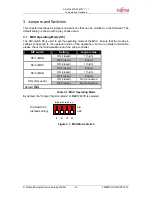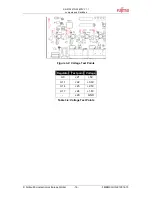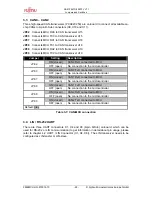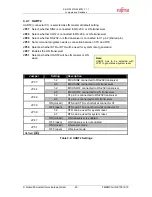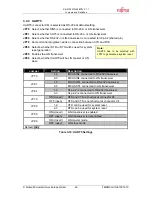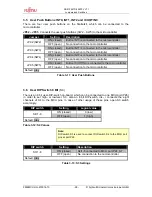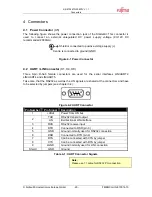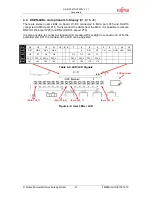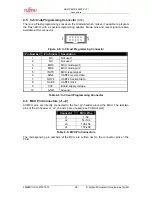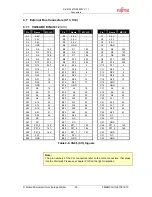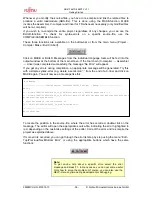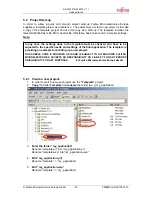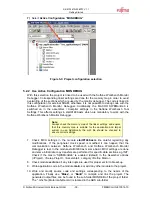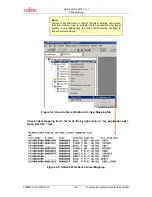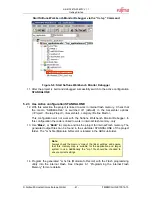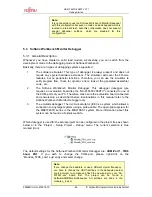
SK-91F467D-208PFV V1.1
Jumpers and Switches
© Fujitsu Microelectronics Europe GmbH
- 27 -
FMEMCU-UG-910014-10
3.7 Reset
Generation
A system reset can be generated in different ways. The first possibility is to press the user
reset push button (SW1). Secondly the supply monitor will generate a reset if an unusual
voltage is detected and third a reset is raised if a UART that does a reset is selected.
An active system reset is indicated by the reset LED D18.
The system reset will do a simultaneous reset of the microcontroller. The MCU can be
disconnected from the system reset signal.
JP96
The Reset push button can be used in two modes:
•
Immediate
reset
•
Secured Reset (2s)
The selection is done by solder jumper JP96.
JP54
Connects the MCU to the system reset signal
Jumper
Setting
Description
ON (closed)
Reset is connected to MCU INITX
JP54
OFF (open)
No connection to the MCU
1-2
Reset is generated immediately when SW1 is
pressed
JP96
2-3
Reset is generated after SW1 is pressed 2s
Default: grey
Table 3-14: Reset Connections
The triple supply monitor on-board has the possibility to watch 5V, 3.3V and the third voltage
is user configurable 2.5V or 1.8V. If any voltage fails, a system reset will be done.
JP42
Monitoring of 1.8V supply voltage
JP43
Monitoring of 2.5V supply voltage
Jumper
Setting
Description
ON (closed)
Vcc1V8 connected to supply monitor
JP42
OFF (open)
Vcc1V8 not connected to supply monitor
ON (closed)
Vcc2V5 connected to supply monitor
JP43
OFF (open)
Vcc2V5 not connected to supply monitor
Default: grey
Table 3-15: Supply Monitor Settings
By default 2.5V supply will be monitored. Do not close both jumpers simultaneously.
The system reset also can be done via any UART. Therefore the user has the possibility to
select one of the three on-board UARTs.
JP57
Select which UART should do the system reset
JP29
The polarity of the DTR/RTS signal can be inverted by this jumper. Remove the
jumper to disable the UART reset function





